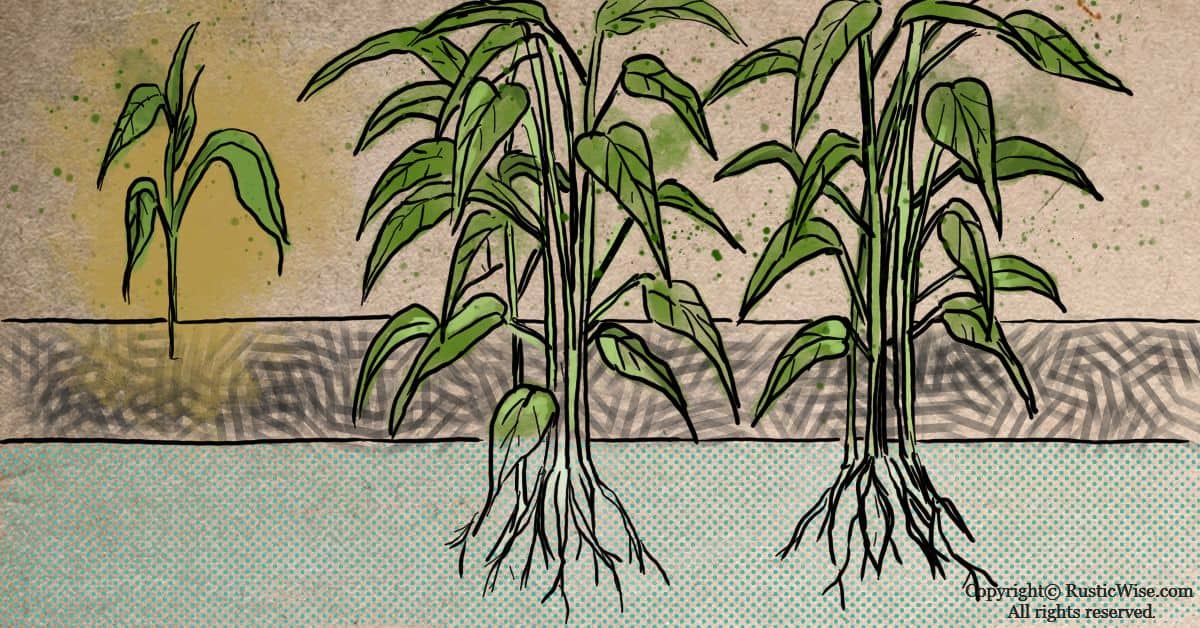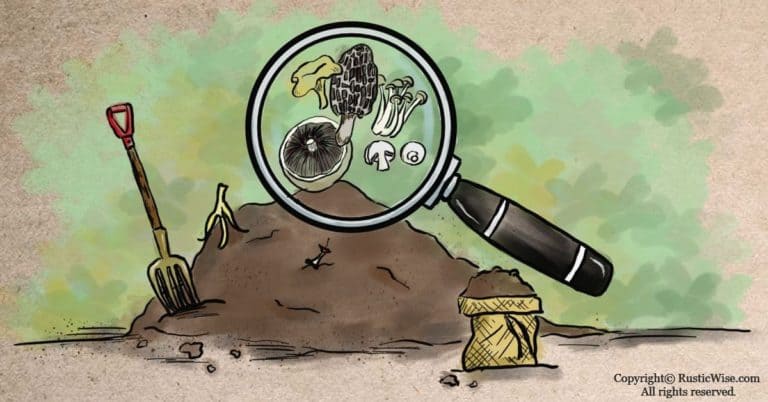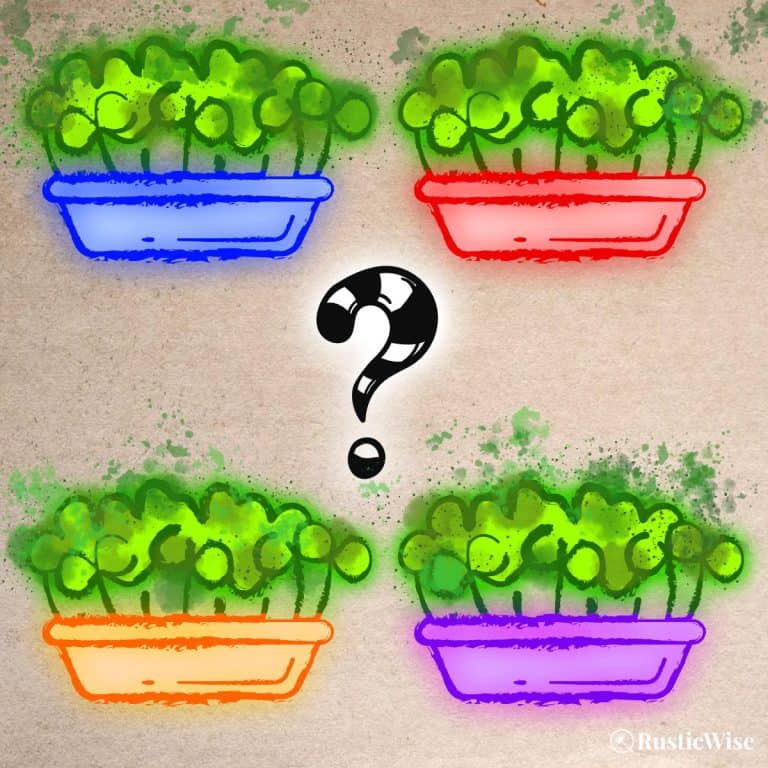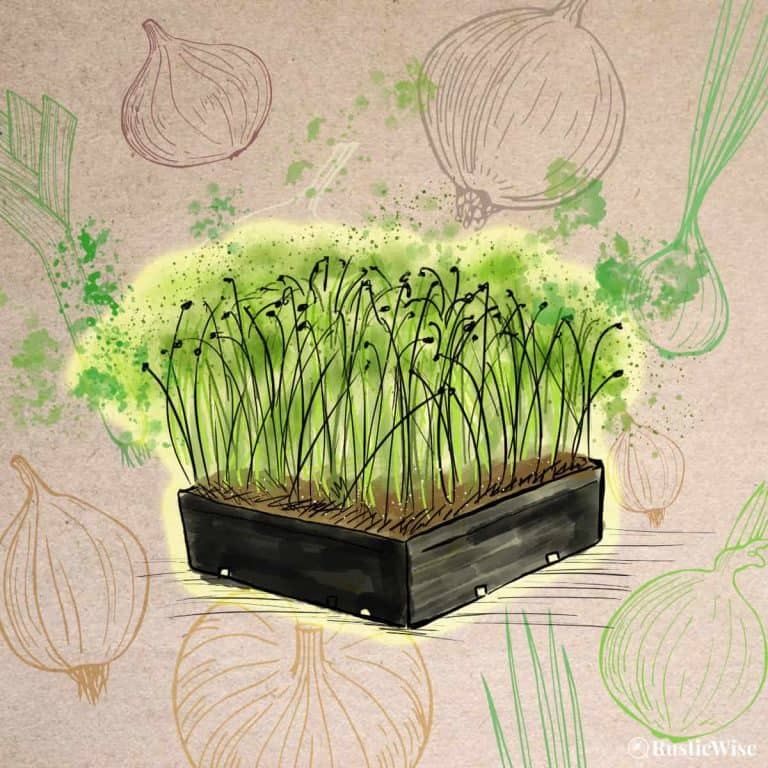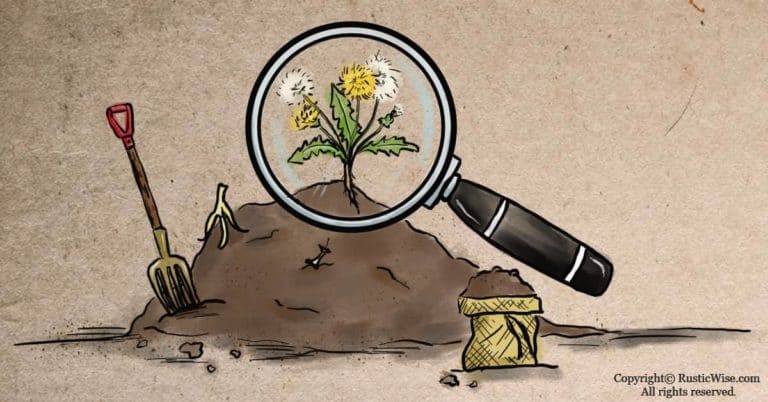How To Grow Kangkong (AKA Water Spinach)
Want to learn how to grow kangkong, one of the most versatile vegetables from Southeast Asia (also known as water spinach)? There are various ways to grow kangkong: from seed in containers, from cuttings, and even in water.
Kangkong has a mild flavor and is used in soups, stir-fry, salads, or side dishes. However you choose to use it, its delicious taste makes it worth cultivating. In this article I’ll teach you all about how to grow kangkong plus its amazing health benefits.
In this article, I’ll teach you all about kangkong growing. Let’s start by discussing where kangkong grows best, then outline some tips for cultivating your own crop of delicious greens.
Growing your own food doesn’t have to be difficult or expensive. With a bit of know-how, you too could enjoy fresh homegrown vegetables like kangkong!
What is kangkong?
Kangkong is a semi-aquatic plant, or aquatic tropical perennial plant cultivated as a vegetable for its tender shoots. It’s native to Southeast Asia and is a member of the Convolvulaceae (Morning glory) family. Kangkong has creeping vines which stay close to water.¹
Kangkong has green, heart-shaped leaves and grows on long, hollow stalks that can reach 7–10 feet (2–3 meters) in length.
Two main types of water spinach
There are two main varieties of kangkong:
- Ipomoea aquatica: The type of kangkong that grows in water;
- Ipomoea reptans: Also referred to as upland kangkong, or those that are planted on land.
Other names kangkong goes by
Kangkong goes by many names, including water spinach, Chinese spinach, Chinese watercress, swamp cabbage, aquatic sweet potato, swamp morning glory, and river spinach. Many Chinese refer to it as ong choy.
What does kangkong taste like?
It has a mild flavor with a hint of bitterness common in many leafy greens, including regular spinach.
Kangkong is popular in Southeast Asian cuisine. Kangkong is a nutritious leafy green vegetable that tastes delicious stir-fried with garlic and sesame oil. It also makes a great addition to soups and salads.
What is kangkong?
Kangkong is a semi-aquatic plant, or aquatic tropical perennial plant cultivated as a vegetable for its tender shoots. It’s native to Southeast Asia and is a member of the Convolvulaceae (Morning glory) family. Kangkong has creeping vines which stay close to water.¹
Kangkong has green, heart-shaped leaves and grows on long, hollow stalks that can reach 7–10 feet (2–3 meters) in length.
Two main types of water spinach
There are two main varieties of kangkong:
- Ipomoea aquatica: The type of kangkong that grows in water;
- Ipomoea reptans: Also referred to as upland kangkong, or those that are planted on land.
Other names kangkong goes by
Kangkong goes by many names, including water spinach, Chinese spinach, Chinese watercress, swamp cabbage, aquatic sweet potato, swamp morning glory, and river spinach. Many Chinese refer to it as ong choy.
What does kangkong taste like?
It has a mild flavor with a hint of bitterness common in many leafy greens, including regular spinach.
Kangkong is popular in Southeast Asian cuisine. Kangkong is a nutritious leafy green vegetable that tastes delicious stir-fried with garlic and sesame oil. It also makes a great addition to soups and salads.
Did you know … Kangkong has been eaten for thousands of years. There are references to I. aquatica dating back to China’s Chin Dynasty period.¹

Credit: Forest and Kim Starr / Flickr
Why you should try growing kangkong plants
Kangkong is a very versatile (not to mention nutritious) vegetable that’s great in many dishes. However, it’s not always easy to find at the grocery store.
You could try your luck finding it at local Asian grocery stores when it’s in season. Rather than scouring local markets in search of this veggie, why not try cultivating it yourself?
Once you know how to grow it, it will continue to provide fresh greens throughout the year.
Where does kangkong grow?
As kangkong is also known as water spinach it’s no surprise that it grows best in wet environments.
It can be found in marshes, ponds and along the edges of lakes. It’s hardy in USDA zones 10 and 11.
While kangkong is native to Southeast Asia, it’s cultivated or grows wild in many places, including Australia, Bangladesh, Cambodia, China, India, Indonesia, Japan, Malaysia, Philippines, Sri Lanka, Taiwan, Thailand, and Vietnam. It’s also grown in the U.S. in several states, including California, Hawaii, and Florida.
Where can you buy kangkong?
While you may find kangkong in the produce aisle of some Asian grocery stores, you might have a harder time finding kangkong or water spinach seeds.
This is because water spinach is classified as a noxious, invasive weed in the United States. This means that you can’t move this plant between states without an USDA-issued noxious weed permit.²
This plant grows so well that it’s difficult to contain. It has taken over some fresh waterways in some states.
However, the state of Massachusetts is allowed to legally grow kangkong as it doesn’t pose a threat to their colder climate (this plant can’t tolerate frost).
According to World Crops, there’s only one business that’s certified to sell kangkong seeds. It’s located in Hawaii:²
Fukuda Seed Store, Inc.
1287 Kalani St.
Honolulu HI 96817
Phone: 808-841-6719
Fax: 808 842-0295
In Canada, kangkong is not illegal (the cold climate isn’t hospitable to kangkong!). You can find seeds available on Amazon and other specialty seed stores.
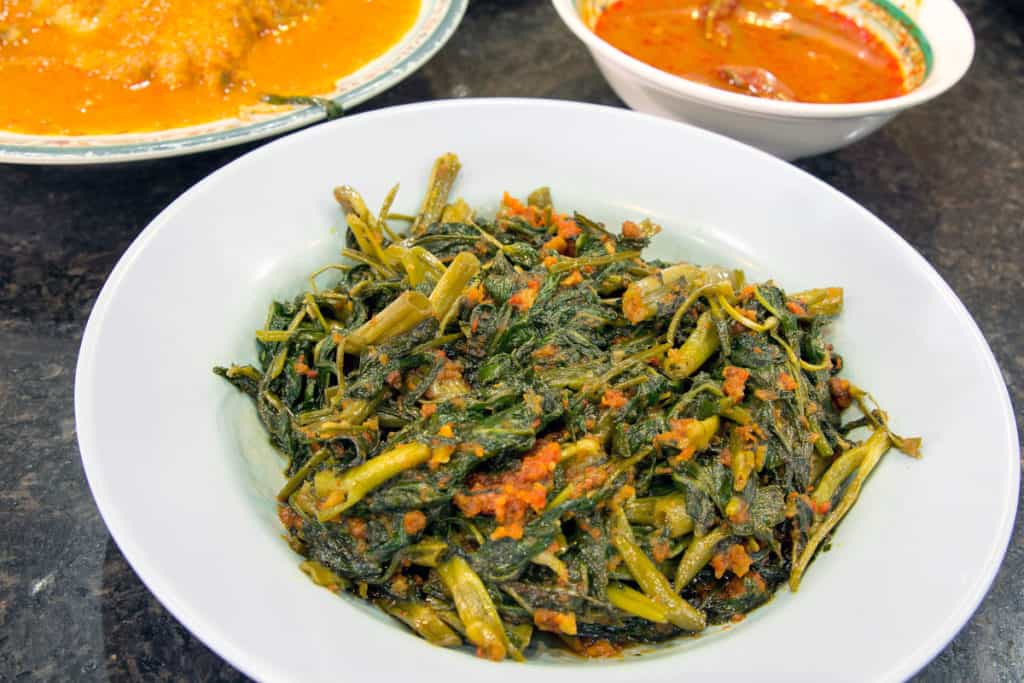
Credit: Yay Images
Nutrition facts and health benefits of kangkong
Kangkong is a tasty, nutritious and versatile vegetable. This veggie is low in calories but high in iron, protein and fiber—it’s a leafy green worth adding to your diet. Around 40 percent of the caloric breakdown of kangkong is comprised of protein. It’s also a rich source of vitamins A and C.
What are the health benefits of kangkong? Let’s take a look at the nutrition facts of one cup (56 grams) of raw, chopped water spinach:³
- Calories: 11
- Protein: 1.5 grams
- Carbs: 1.8 grams
- Fiber: 1.2 grams
- Vitamin C: 34% of the Daily Value
- Vitamin A: 20% DV
- Magnesium: 9% DV
- Folate: 8% of the DV
- Iron: 5% DV
- Potassium: 4% DV
- Manganese: 4% DV
- Calcium: 3% DV
- Phosphorus: 2% DV
As you can see, just one cup of raw kangkong contains 34 percent of your daily intake of vitamin C. Vitamin C (ascorbic acid) is a vital part of many bodily functions including healing wounds, regulating the immune system, and maintaining healthy bones and teeth.
Packed with vitamin A which keeps your skin healthy, water spinach protects your body from illness, and provides your vision with a boost in low light conditions.
For a leafy vegetable, kangkong also contains a fair amount of iron and protein.
Kangkong also has some medicinal applications. This versatile veggie is rich in magnesium. Magnesium is a nutrient that helps to regulate blood sugar and blood pressure, and maintains healthy muscle and nerve function. This makes kangkong an excellent choice for people with diabetes.
Kangkong also has some powerful benefits for your liver. It protects your liver from toxins including arsenic, cadmium, carbon tetrachloride, and lead while helping to manage diabetes.⁴
How to plant kangkong
There are several ways you can grow kangkong: from seed in containers, from cuttings, and in water.
Growing kangkong is fairly easy—give it plenty of sunlight and water. The roots need moist soil to grow, however once the young plants are established, kangkong’s hollow stems spread easily across bodies of water.
If you live in a warm climate (USDA zones 10 and 11), you can grow kangkong as a perennial and enjoy year-round greens—leaves regrow after harvesting.
Those that live in cooler climates can grow this edible plant as an annual. If you don’t want your entire yard covered in water spinach, keep it from spreading by planting in a container.
Growing conditions for kangkong
- Soil: Kangkong does well in well-draining potting mix soil that’s rich in organic material. If you have your own backyard compost, mix some of that goodness into the soil! Plants that grow in barren soils create weaker plants with thin stems and bitter-tasting leaves. The ideal soil pH is 6–7.
- Light: This tropical plant loves full sun, but likes some shade in the afternoon.
- Water: Not surprisingly, this veggie loves water. Give it plenty of water to help it develop strong and healthy roots. Keep the soil fairly moist at all times.
- Food: To grow healthy kangkong in containers, give it a nitrogen-rich liquid fertilizer every two weeks to promote lush growth of leaves. If planting directly in soil outdoors, kangkong doesn’t need much fertilizer.
- Climate: This tropical plant does well in warm, humid climates. You can replicate this by putting this plant in a greenhouse. Kangkong can’t tolerate frost or cold. If planting outdoors, ensure there’s no chance of frost.
How to grow kangkong from cuttings
If you’re able to get your hands on a few fresh cuttings, cultivation of kangkong from cuttings is the way to go. Growing from seed provides mixed results, and is for those with more time and patience.
Take cuttings from stem shoots that are between 8–24 inches (20–60 centimeters) long. The University of Adelaide recommends you take cuttings from stems where the tips have just been harvested within the past couple of days. These are the cuttings that provide the best results.⁴
When taking cuttings, aim to get three or more nodes. One node needs to go beneath the soil.
Keep cuttings in clean water in a shady area until you are ready to plant. Change the water frequently to prevent the stem from rotting. In about 2 weeks, you should see signs of healthy root growth. Now it’s time to properly plant them!

Growing kangkong cuttings in containers
When growing water spinach plants in pots, it’s important to select the right size of container. Remember that these water-loving plants like to develop a healthy underground root system, and need plenty of space to grow.
Select a pot that’s fairly deep and wide. Aim for a pot that’s at least 12 inches (30 centimeters) deep. The best pots for kangkong are terracotta, clay, or plastic. A few drainage holes are a good idea.
Dig a hole for each cutting or seedling about 3 inches (8 centimeters) deep and 1 inch (3 centimeters) wide. Space each plant 6 inches (15 centimeters) apart.
If you’re planting cuttings, remember to place at least one node beneath the soil’s surface.
Cover with soil, and gently pat down. Water well after planting. Continue to water every 1–2 days as needed to keep soil moist.
How to grow kangkong from seed
Kangkong seeds come from seed pods of flowers. Growing from seed can be done indoors in colder climates. Or, you can plant directly in soil outdoors if the soil temperature is fairly warm, typically in late spring to early summer.
You’ll need:
- Rich potting soil
- Starter growing tray (or a shallow dish) and a cover
- Kangkong seeds
- Water
- Soak seeds overnight to speed up the germination process.
- Fill growing tray with rich potting soil.
- Sow seed in soil about 1/5-inch (0.5 centimeters) deep and roughly 3 inches (8 centimeters) apart.
- Keep seeds moist and well watered. Place a cover over the seeds to create a greenhouse. Ensure the soil temperature remains warm (around room temperature). Place seeds in the sunlight.
- You should see young shoots emerge about 2–3 weeks after planting. You can remove the cover at this point. Continue to keep soil moist.
You can transplant seedlings when they’re about 5 inches (13 centimeters) tall, or have two sets of developed leaves.
You can transplant to a pot, or directly to your outdoor garden.
Tip: Kangkong is a prolific grower (which is why it’s classified as an invasive species in some areas!). To prevent this quick-spreading plant from taking over your yard, keep it in a container. Or, ensure you harvest the leaves before flowers appear with their seeds.
How to grow kangkong in water
Kangkong is such a versatile plant. Growing kangkong hydroponically in a container is perfect for those with limited garden space.⁵
Tip: Since sitting water can attract pests and insects, especially mosquitos, try adding a few fish to your container to keep insects at bay. Regularly check your kangkong leaves for pests.
You’ll need:
- A large container. You want a big container, but one that’s still manageable so you can easily harvest your plant. A large ceramic pot works well.
- Clean water
- Several kangkong cuttings
- Wire grid or mesh to hold the cuttings in place. This is handy for supporting the plant as it grows. You can fasten together several bamboo sticks to create a grid, or use steel mesh.
- Fill pot with clean water leaving just an inch or two at the top.
- Place a grid or mesh just below the water’s surface.
- Arrange kangkong cuttings in water, preferably one with thicker stems for healthy growth. Stems are hollow which allows the plant to float. Arrange the leaves so they are above the water.
- Apply a liquid fertilizer. If you have small fish in your container, you may wish to dilute it, and ensure it’s a natural fertilizer.
With time, your cuttings will develop downwards roots. Top up your kangkong water garden with fresh water as needed. Apply a liquid fertilizer once a week.
When to harvest kangkong?
Tip: Harvesting wild water spinach? Since kangkong often grows in or around waterways, ensure the water source is clean from the plant you’ll be harvesting from.
A kangkong plant can take between 2–6 months before fully grown. If growing from cuttings, you may be able to harvest sooner.
When you have an abundance of kangkong it’s best to harvest early in the morning to avoid the midday sun that may wilt the leaves.
Kangkong is ready to harvest when leaves are approximately 4 inches (10 centimeters) long.
If you have an abundance of kangkong, you may be able to harvest every day.
Using a sharp knife or pair of scissors, make a clean cut at the tip. The best place to cut is from the third new and full leaf from the tip. Harvested tips may regrow in a matter of days.
How to store harvested kangkong
Before eating, always thoroughly wash kangkong. You can bundle harvested tips together and place in a container filled with clean water. Place a loosely wrapped plastic bag over the top and store in a cool place. Kangkong stored this way keeps for around two days.
For longer term storage, place kangkong in an airtight container in the fridge for up to one week. If there is moisture, pat dry with a paper towel before storing.
How do you eat kangkong?
You can eat kangkong fresh or cooked. Almost the entire plant is edible. For those with compromised immune systems, it’s best to cook kangkong before eating.
- Tips: The young succulent tips are used fresh in salads or blended and added to drinks.
- Leaves: Young leaves can be eaten fresh in salads. Older leaves are best prepared by sautéing, steaming, boiling, or stir fried. Leaves have a mild, spinach-like flavor. Add a splash of soy sauce for flavor!
- Stems: Cut into small sections and add to stir fry.
Kangkong recipes
Here’s a few easy and delicious kangkong recipes to try out.
Kangkong in Garlic Sauce
Sauté kangkong and serve with oyster sauce, rice wine, and plenty of garlic (via Ang Sarap).
Adobong Kangkong
A Filipino version of vegetable adobo—kangkong simmered in soy, vinegar, and garlic (via Kawaling Pinoy).
Related questions
If you’re wondering what helps the kangkong float in water, the secret lies in its hollow stems. The kangkong stem allows the plant to stay above the surface of water. Kangkong loves water and you might see this prolific grower growing along the tops of waterways.
How do you collect kangkong seeds?
To collect the seeds of kangkong, you’ll need to wait until the plant has flowered, or is about six months old.
Collecting seeds from kangkong: You can harvest pods by cutting them off just below their bases on a dry day in July or early August when they’re brownish but not yet brittle. Its papery skins split open to expose individual seeds.
Does water spinach have common pests?
Generally, this plant doesn’t experience too many diseases or pests. However, sometimes a common pest is the grasshopper when the weather is dry. Caterpillars too, enjoy munching on a narrow leaf or two. Leaf miners and mealybugs can be kept at bay by maintaining the proper growing condition and providing healthy soil.
Can kangkong survive winter?
That depends on how mild your winters are. Water spinach will not tolerate any frost or frigid temperatures. If you live in a temperate region with warm winters, you may be lucky enough to keep kangkong alive year round. You could try keeping it in a greenhouse over winter. Otherwise, you can grow this vegetable as an annual.
When’s the best time to plant kangkong?
If you live in a cooler region and are planting it as an annual, the best time to plant kangkong is in late spring and early summer when all chance of frost has passed. In warm climates, you can plant it any time of year.
👉 If you like this post, see our complete Indoor Growing Collection.
Would you like more timeless tips via email?
Fun tips to help you live an independent, self-sustaining lifestyle. Opt-out at any time.


References
- Austin, Daniel (2007). “Water Spinach (Ipomoea aquatica, Convolvulaceae): A food gone wild,” Ethnobotany Journal Vol. 5. Accessed April 2023.
- World Crops for Northern United States, Water Spinach, https://worldcrops.org/crops/water-spinach. Accessed April 2023.
- My Food Data (USDA), Swamp Cabbage (Water Convolvulus (Raw)), https://tools.myfooddata.com/nutrition-facts/169301/wt1/1. Accessed April 2023.
- The University of Adelaide, Kangkong Factsheet No. 08, https://www.adelaide.edu.au/directory/graham.lyons?dsn=directory.file;field=data;id=40381;m=view. Accessed April 2023.
- Gardening Australia, Growing Kangkong, https://www.abc.net.au/gardening/factsheets/growing-kangkong/9432670. Accessed April 2023.

Author: Theresa Tesolin
Theresa is co-founder of RusticWise. She helps people unleash their inner DIY spirit by encouraging them to get dirty and make or grow something from scratch.

